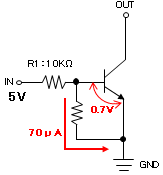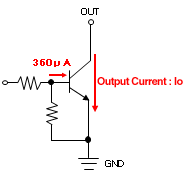Attention to Internet Explorer users: ROHM website does not recommend browsing in IE 11. Please use latest browser to ensure the best performance on ROHM website.
- Products
- Technical Support
- Solutions
- Purchase/Support
- Company/IR
- Sustainability
- Amplifiers & Linear
- Power Management
- Motor / Actuator Drivers
- MOSFETs / Transistors / Diodes
- Power Devices
- Resistors / Capacitors
- Memory
- Clocks & Timers
- Switch & Multiplexer & Logic
- Data Converter
- Sensors & MEMS
- Display Drivers
- Interface
- Wireless LSIs
- Audio & Video
- Speech Synthesis LSIs
- Microcontrollers (MCUs)
- Opto Electronics
- Wireless Modules / Printheads
- Foundry Service
- Amplifiers & Linear
- Operational Amplifiers
- Comparators
- Current Sense Amplifier ICs
- Power Management
- DC-DC Converter ICs
- Flyback Switching Regulators
- AC-DC Converter ICs
- AC Voltage Zero Cross Detection ICs
- Linear Regulators
- Composite Power Supplies (PMICs, System Power Supplies)
- LED Drivers
- Voltage Detectors (Reset ICs)
- Power Management Switch ICs
- IPDs (Smart Low Side & High Side Switch ICs)
- Gate Drivers
- Wireless Power
- Battery Management ICs
- Motor / Actuator Drivers
- DC Brush Motor
- Stepper Motor
- Single Phase Brushless DC Motor
- 3-Phase Brushless DC Motor
- High Voltage 3-Phase Brushless DC Motor
- Fan Motor
- Printer
- Digital Still Camera
- Mobile Phone Module
- Gate Drivers
- MOSFETs
- Gate Drivers
- Bipolar Transistors
- IGBT
- Diodes
- IPDs (Smart Low Side & High Side Switch ICs)
- Power Transistors
- Power Diodes
- SiC Power Devices
- GaN Power Devices
- IGBT
- Intelligent Power Module
- Gate Drivers
- Resistors
- Capacitors
- Memory
- Serial EEPROM
- Clocks & Timers
- CR Control Timer ICs
- Switch & Multiplexer & Logic
- Standard Logic
- USB Switch ICs
- Power Management Switch ICs
- IPDs
- Data Converter
- A/D Converters
- D/A Converters
- Audio Converters
- Sensors & MEMS
- Current Sensor IC
- Hall ICs
- Ambient Light Sensor ICs
- Temperature Sensor ICs
- Shock Sensor Amplifier
- Optical Sensors
- Display Drivers
- TN/STN LCD Drivers
- TFT LCD Drivers
- OLED Drivers
- Interface
- SerDes IC
- LVDS Interface ICs
- Gas Water Heaters Interface ICs
- Multiple Input Switch Monitor LSI
- LIN Transceiver
- CXPI Transceiver
- CAN Transceiver
- USB Type-C Power Delivery
- Wireless LSIs
- Industrial Wireless Communication LSIs
- Audio & Video
- Audio Amplifiers
- Power Supply ICs for Audio
- Audio Processors
- Video Amplifiers
- Audio Converters
- Video LSIs
- Speech Synthesis LSIs
- Automotive-grade
- Long Playback
- Short Playback
- Supports External Memory
- Speech Play Back MCUs (8bit)
- Microcontrollers (MCUs)
- Edge Computing AI MCUs (Solist-AI™ MCUs)
- Power Electronics Control MCUs (LogiCoA™ MCUs)
- General-purpose MCUs (16bit)
- USB Interface & Security function MCUs (32bit)
- Speech Play Back MCUs (8bit)
- LED
- Laser Diodes
- Optical Sensors
- Wireless Communication Modules
- Printheads
- Thin-Film Piezoelectric MEMS
- Wafer (LAPIS)
- Operational Amplifiers
- Standard Operational Amplifiers
- High Speed Operational Amplifiers
- Low Power Operational Amplifiers
- Low Noise Operational Amplifiers
- Low Offset Voltage Operational Amplifiers
- High Performance Operational Amplifiers
- Comparators
- Standard Comparators
- High Speed Comparators
- Low Power Comparators
- DC-DC Converter Ics
- Buck (Step-down)
- Boost (Step-up)
- Buck-Boost / Inverting
- High Voltage Buck for AC-DC (Offline)
- Isolated, Optocoupler-less
- PWM / Quasi-Resonant AC-DC (Offline)
- AC/DC Converter ICs
- PWM / Quasi-Resonant
- PFC + Quasi-Resonant Combo
- PFC
- Secondary Side Synchronous Rectification
- LED Drivers
- Step-up (Boost) LED Drivers
- Step-down (Buck) LED Drivers
- Buck-Boost LED Drivers
- Multi-Function LED Drivers
- Lighting LED Drivers
- Inductor-less (Charge Pump) LED Drivers
- Constant Current / Serial-in Parallel-out LED Drivers
- Wireless Power
- Power Receiver LSIs (13.56MHz Wireless Charge)
- Power Transmitter LSIs (13.56MHz Wireless Charge)
- Battery Management ICs
- Battery Charge Management ICs
- Charge Protection ICs
- EDLC Monitoring ICs
- Coulomb Counter
- Li-ion Battery Monitoring LSI (LAPIS)
- Gate Drivers
- Isolated Gate Drivers
- Isolated Switch Driver (Isolated MOS Driver)
- IGBT/MOSFET High/Low Side Gate Drivers
- Non-insulated Gate Drivers for Battery Management System (BMS)
- Gate Drivers for GaN
- MOSFETs
- 12 to 150V MOSFETs
- 190 to 800V Power MOSFETs
- Automotive MOSFETs
- Bipolar Transistors
- General Purpose Bipolar Transistors
- Digital Transistors
- Darlington Transistors
- Complex Transistors
- Diodes
- Schottky Barrier Diodes
- Fast Recovery Diodes
- Standard Rectifier Diodes
- Zener Diodes
- Transient Voltage Suppressor Diode
- Switching Diodes
- Band Switching Diodes
- PIN Diodes
- Detection Schottky Diodes
- Power Transistors
- 12 to 150V MOSFETs
- 190 to 800V Power MOSFETs
- Automotive MOSFETs
- General Purpose Bipolar Transistors
- Digital Transistors
- Power Diodes
- Schottky Barrier Diodes
- Fast Recovery Diodes
- Standard Rectifier Diodes
- Transient Voltage Suppressor Diode
- Zener Diodes
- SiC Power Devices
- SiC Schottky Barrier Diodes
- SiC MOSFETs
- SiC Power Module
- SiC Schottky Barrier Diodes Bare Die
- SiC MOSFET Bare Die
- GaN Power Devices
- GaN HEMT
- GaN HEMT Power Stage ICs
- Gate Drivers for GaN
- IGBT
- Field Stop Trench IGBT
- Ignition IGBT
- IGBT Bare Die
- Intelligent Power Module
- IGBT-IPM
- Gate Drivers
- Isolated Gate Drivers
- IGBT/MOSFET High/Low Side Gate Drivers
- Non-insulated Gate Drivers for Battery Management System (BMS)
- Resistors
- Current Detection Resistors (Shunt Resistors)
- High Reliability Resistors
- Standard Chip Resistors
- Capacitors
- Silicon Capacitors
- Serial EEPROM
- Standard EEPROM
- Automotive EEPROM
- Standard Logic
- Logic Gates
- TN/STN LCD Drivers
- General LCD Segment Drivers
- Controller Drivers for Graphic LCD
- Controller Drivers for Low Duty LCD
- Industrial Wireless Communication LSIs
- Specified Low Power Radio (Sub-GHz Band Radio)
- LPWA
- MCU Included Specified Low Power Radio System LSIs
- Audio Amplifiers
- Speaker Amplifiers
- Headphone Amplifiers
- Line Amplifiers
- Power Supply ICs for Audio
- Power Supply ICs for High Fidelity Audio
- For Car Audio Systems
- Audio Processors
- Analog Audio Processors
- Video Amplifiers
- Composite Video Amplifiers
- Video Switches
- Isolation Amplifiers
- Audio Converters
- Audio DACs
- Video LSIs
- Video Decoders
- Video Encoders
- Video Interface
- Display Controller Series for Small to Medium-Sized TFT LCD
- LED
- Chip LEDs (Mono-color type)
- Chip LEDs (Multi-color type)
- LED Lamps (Mono-color type)
- Infrared Light Emitting Diodes (NIR: Near Infrared)
- Infrared Light Emitting Diodes (SWIR: Short Wavelength Infrared)
- Laser Diodes
- High Output Laser Diodes
- Infrared Laser Diodes
- Red Laser Diodes
- Multi beam Laser Diodes
- Optical Sensors
- Transmission Type Photointerrupters
- Reflective Type Photosensors
- Infrared Light Emitting Diodes (NIR: Near Infrared)
- Infrared Light Emitting Diodes (SWIR: Short Wavelength Infrared)
- Phototransistors (NIR: Near Infrared)
- Ambient Light Sensor ICs
- Wireless Communication Modules
- Wi-SUN Modules
- EnOcean Modules
- Bluetooth® low energy Modules
- Printheads
- For Mobile Printers
- For Label writers
- For Receipt, Label Printers
- For High-speed Receipt, Smart POS Printers
- For Large-sized, High-speed Label Printers
- For Large-sized, High-speed Label Printers with The Heat historical control
- For TTO (Thermal Transfer Overprinters)
- 13.56MHz (NFC) Wireless Charger Modules
- New Products Listing
- Catalog
- Video Gallery
- Cross Reference Search
- Package List
- Recommended Products Search
- Product Longevity Program
- Topology Selection
- Reference Design
- Application Notes and Design Simulation Models
- Distribution inventory
- Authorized Distributors & Sales Reps
- Tech Web:Learn the Essentials of Circuit Design
- Adoption・Collaboration Examples
- Articles in the Media
- Contact Us
- FAQ's
- MOSFET Selection Tool for synchronous rectification DC/DC converter
- MOSFET Selection of Load Switch
- AC/DC Converter IC
- DC-DC Power Supply Circuit Design Guide
- Isolated flyback-type DC-DC Converter
- SiC Power Devices
- Design Models
- ROHM Solution Simulator
- Circuit Models for LTspice®
- AC/DC Designer
- Stepping motor for thermal calculations tool
- Resistor calculation tool
- T.C.R Calculation Tool
- Sensor Evaluation Kit
- Power Management Evaluation board library
- Main Inverter (Traction Inverter)
- Bi-directional Onboard Charger (OBC)
- Uni-directional Onboard Charger (OBC)
- Automotive DC-DC Converter
- Automotive Battery Management System (BMS)
- Electric Compressor (E-Comp)
- Body Control Module (BCM)
- HV Heater/PTC Heater
- ADAS Domain Controller
- ADAS Electronic Control Unit (ADAS ECU)
- ADAS Radar
- ADAS LiDAR
- ADAS Sonar
- ADAS Camera System
- ADAS Camera Monitoring System (CMS)
- ADAS Driver Monitoring System (DMS)
- Dashboard Camera (Drive Recorder)
- LED Front Light (LED Headlamp)
- LED Front Light (LED Headlamp) - Adaptive Driving Beam (ADB)
- LED Rear Light (LED Rear Lamp) - Cold Cranking Compatibility
- LED Rear Light (LED Rear Lamp) - Animated Lighting
- LED Rear Light (LED Rear Lamp) - Dynamic Control
- Small Lamp
- Fog Lamp
- Cluster/Center Information Display (CID)
- Head-Up Display (HUD)
- Main Inverter (Traction Inverter)
- VCU(Vehicle Control Unit)
- DC-DC Converter
- Lamp
- Cluster
- Solar Power Inverter (PV Inverter)
- EV Charging Station (Off-board Charger)
- Industrial AC-DC Converter
- Small UPS - 1kVA
- Consumer UPS - 10kVA
- Industrial UPS - 100kVA
- Industrial Battery Management System (Battery Pack)
- Electric Smart Meter
- Base Station Remote Radio Head (RRH)
- Server Board
- Motor Drive: 3-Phase 100-240VAC Non-Isolated
- Motor Drive: 3-Phase 400VAC Inverter
- Motor Drive: 12-48VDC Industrial
- Motor Drive: 3-Phase AC100-240V AC Servo
- Industrial LiDAR
- AGV
- PLC (Programmable Logic Controller) - Power Supply Unit
- PLC (Programmable Logic Controller) - Input/Output Unit
- Code Reader
- Optical Encoder
- Safety Light Barrier
- Gas Leak Detector (Industrial Use, Handy Type)
- Surveillance Camera
- Ventilator
- Air Conditioner
- Refrigerator
- Washing Machine
- Robot Vacuum Cleaner
- IH Rice Cooker
- Gas Leak Alarm - Home Use
- Fire Alarm - Home Use
- Hearables/Earbuds
- Non-Isolated Current Sensing - Automotive
- Non-Isolated Current Sensing - Industrial Equipment
- Industrial Motors
- Functional Safety "ComfySIL™"
- Distribution Inventory
-




